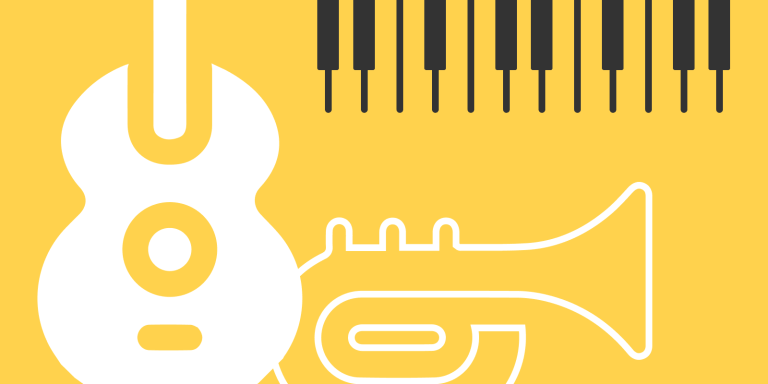Table of Contents
Has your music school got shuttered due to COVID-19?
Then you have to stop depending on your physical location and start teaching music online.
In this guide, you’ll learn exactly how to do that.
Here’s what we’re covering:
Let’s get started.
Table of contents
Do Online Music Lessons Work?
COVID-19 has undoubtedly changed the way most people learn music, encouraging them to embrace online education. This is huge for most musicians out there who now see online music teaching as their future. And rightly so.

Teaching music online however, isn’t anything new. A single search on Google and YouTube will convince you as many music teachers have already started offering their expertise online. And while online music tuition is very different to conducting in-person music lessons, it works out pretty well.
What happened, is the cruising opening the way to more people, both teachers and students to look into this option. While the first spike has stabilized, the interest in online music lessons is higher than before and will keep high for the next few years!
A number of reasons make online lessons a preferred method of teaching music:
They save time
Online music lessons are time-savers. They can easily fit in a busy schedule and offer the opportunity to attend a class whenever and wherever works best for you. Then again, if you are offering recorded music video lessons only, you might not need to do so at all.
They cost less
By ‘moving online’, music teachers can cut down expenses related to paying rent or sharing their earnings with a music school. Apart from that, they have no additional costs for printing transcripts (sheet music) or traveling, because there is no commuting involved.
They require less effort
Conducting online classes doesn’t require you to invest as much time and energy as you would to prepare and deliver in-person music lessons. Online teaching offers the advantage of creating online courses that can be created once, but purchased and accessed by several learners multiple times.
They attract more students
Online video lessons are seen and accessed easily from an unlimited number of students around the world. As a music instructor, you can reach out to more students (than you would do in the traditional way), gain more recognition and expand your professional network.
They can increase your revenue
Just because they can offer you much bigger exposure, online lessons have no limitations on your earning potential. As an online teacher, your expected revenue can be higher than the average annual pay of $43,740 as recorded by Glassdoor.
How to Teach Music Online: 6 Steps
The are three routes to teaching music online:
As a music teacher, you don’t need any formal qualifications to teach online. However, a relevant music degree or formal qualification, teaching experience (at least 2 years), and special knowledge in a musical instrument is important.
Being a qualified music teacher gives you an advantage over other professionals and increases your chances of getting chosen by an employer (in case of Route 1) or by a student (in case of Route 2).
For this article, we are focusing on Route 3, your own online music studio.
If that’s your chosen route, here’s what you need to do:
Step #1: Think about what you want to teach (and how)
First, choose your musical instrument and music genre(s).
Then, decide who you want to teach (children or adults) and adopt the learning method that suits each age group.
Finally, determine how you will deliver the lessons thinking about the format.
There are many types of music lessons to teach online and each can meet different learning needs. These may be classified as beginner, intermediate or advanced classes and can range from simple video tutorials, recorded or live lessons, one-to-ones to group lessons or masterclasses.
Having a variety of options is crucial for students who feel joining an online music class is less stressful than the in-person class in any of these settings.
For example, an online course that includes a combination of these types of music lessons is ideal for students who prefer self-paced learning, but occasionally need those live classes to keep themselves motivated and gather feedback.
Step #2: Assemble your equipment
Since online music lessons rely on audio-visual communication, it’s important to equip yourself with the right tools and software that will allow you to conduct classes effectively and with ease.
To teach music online, you will need:
In regards to your internet connection, an important element to consider when conducting live classes, is internet speed/bandwidth. Purchasing enough internet bandwidth from your internet provider should allow you to reduce latency or lag time (upload speed is the most important here).
Lag time is the asynchronization or time delay between what happens on the screen and the video or sound. Since performing music relies on perfect timing, lag time is the enemy. To minimize its effects, you may also consider establishing a wired connection (or closing those unnecessary browser tabs).
Step #3: Prepare your teaching space
Dedicate a physical space – either in your home or a music studio, where you can have your live classes or record your music tutorial videos. A quiet place that has the minimum distractions and welcomes natural light is an ideal teaching space. If you need more help on setting up your teaching space, check out our article on camera positioning and lighting equipment you may need.
Step #4: Record your music lessons
Once you have everything in place, start by creating video tutorials using YouTube to show basic playing techniques on your chosen instrument. This is a great way to teach music but also attract new students when shared publicly.
With YouTube, you also have the option to share your videos with only specific people. Simply add them as ‘unlisted’ and send the link to your students to access them for free.
Recorded music videos work great as part of your music curriculum, or as an alternative to live sessions when you can’t meet your students online at a specific time.
Step #5: Create a music curriculum
A complete music course usually consists of a set of video lessons that help students learn how to read and play music. An introductory lesson to music theory is essential, while technique-building exercises and access to sheet music are essential for the tuition of every musical instrument.
There are many websites that offer music teaching resources, where you can find lesson plans, worksheets, quizzes, assignments, downloadable material, and music scores for free or at a price.
For lesson planning:
For music theory:
For sheet music:
Setting clear learning goals and objectives on what students can expect to learn upon completing the music lessons, paves the way to your success as an online music teacher.
Step #6: Promote your music lessons
Creating a website can help you build an online presence and further advertise your music lessons or courses. Start with building a sales page dedicated to your music lessons and invite people to join in.
Also, when it comes to social media, YouTube is the platform that you need to take advantage as a music teacher. If you don’t have a channel yet, make sure you create one to showcase your work. Facebook and Instagram are great options too depending on your student demographics.
Other course promotional ideas include offering freebies or downloadbles e.g. PDF lesson samples, ebooks or music guides as lead magnets and building an email list.
You can start your online music school with LearnWorlds in no-time and without any technical skills needed. You can get a 30-day free trial today:
What Music Lessons Can You Teach Online?
If you want to become an online music teacher, the very first question to ask yourself is what can you teach others.
Finding your niche is all about discovering what you are good at, where your talents lie, as well as what you love about music that you can offer back to the world.
Apart from that though, it is important to search the demand in music education.
Getting to know the market can help you understand what your target audience needs. For better results, you can use Google and Quora to discover what most people show interest in while discussing music.
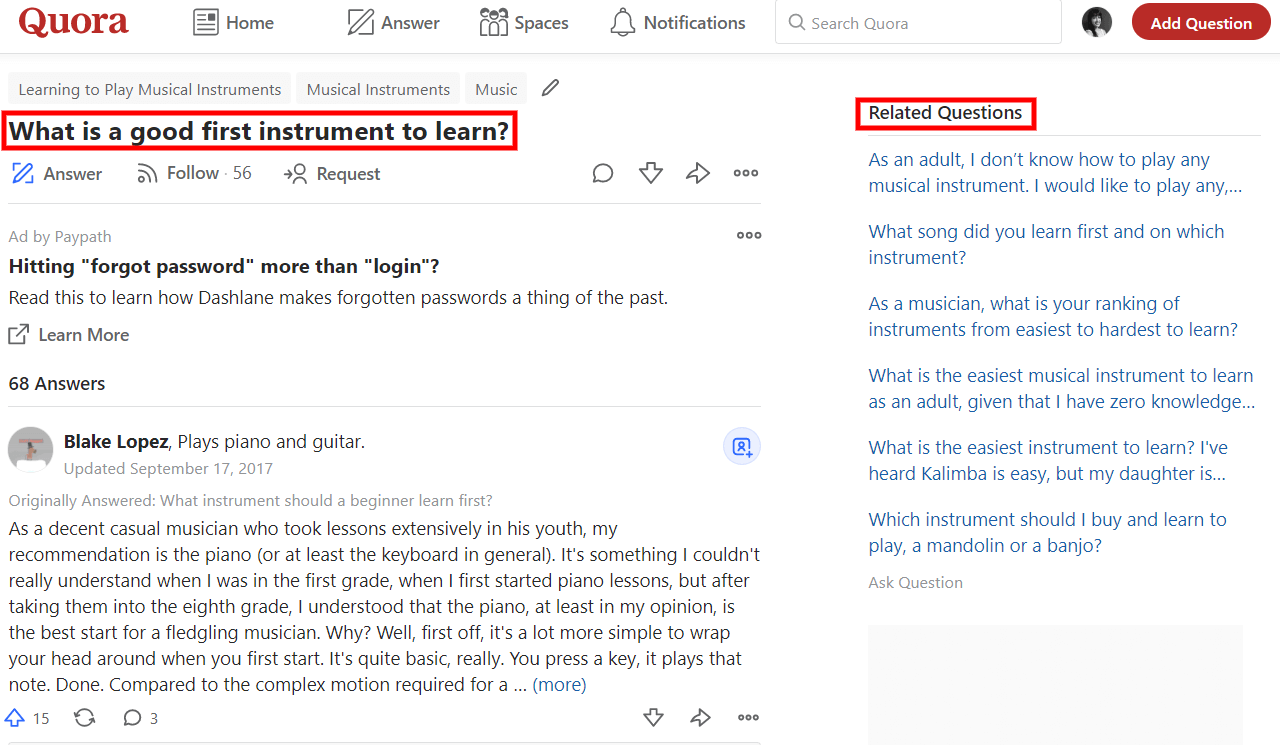
To help you out identify market needs, we have conducted research on some of the most popular options you can choose from:
Teach Piano Online
Piano is the most popular and vertisale musical instrument in the world. No wonder why it is often referred to as ‘the king of instruments’.
Piano teaching may cover all aspects of piano playing including posture work, solfege training, practising or memorizing songs, learning the piano scales, chord progressions, octaves and arpeggios.
As a pianist, there are also many music genres you can incorporate into your online piano lessons, including classical piano, jazz piano, musical theater piano, pop rock or liturgical piano among others.
Teach Guitar Online
If you are a guitarist, there is great potential in offering online guitar lessons. Proper online guitar tuition is hard to find, which is why coming up with a guitar course is a profitable business idea to begin with.
Teaching guitar starts with determining what type of guitar(s) you will use and what types of music you can teach.
Even though there are many variations, these are the four most basic guitar types:
Depending on which one(s) you go for, as a guitar teacher you can start offering video lessons to students on how to hold or tune the guitar, how to read guitar tabs, play chords and progressions, or how to get various strumming patterns, finger-style techniques and guitar riffs right.
For more advanced students, you may focus on teaching specific songs, guitar playing techniques such as finger-picking, creating guitar harmonies and improvisation.
Teach Violin Online
Apart from piano and guitar, the violin is also getting a lot of attention. Online violin lessons are popular and there are many marketplace websites offering them already.
The violin has a wide range of capabilities as an instrument. It can be used in almost any music genre but it requires great dexterity.
If you want to become a violin teacher, your violin course curriculum can include lessons on correct posture, tuning, bowing techniques (e.g. tremolo, pizzicato, staccato etc), violin positions and other more advanced techniques that use double, triple and quadruple stops as well as natural and artificial harmonics.
Teach Mandolin Online
A string instrument that is often associated with traditional music globally, is the mandolin. The mandolin comes in many variations that differ in terms of instrument construction – shape and number of strings, and of course, musical range.
Mandolin tuition may include basic scales and chords, strumming exercises and techniques relevant to your preferred music style, or teaching students how to play popular songs, perform solos and improvised patterns.
Teach Saxophone Online
The saxophone is a woodwind instrument that has a wide repertoire, which means it can play many musical styles. These range from classical music – as part of an orchestra, a concert band, a military, marching or jazz band, to modern, rock and popular music.
Although it comes at different shapes and sizes depending on its musical range, the alto saxophone is the easiest to use and it’s suitable for teaching beginners.
Saxophone lessons may include several technique-building exercises related to posture, hand position, embouchure, tonguing and breathing. Once a student learns how to produce proper sound, tune well, and learns how to play the notes, you can continue with etudes, scales or similar patterns and solos.
Teach Flute Online
Flute is another popular instrument that comes from the woodwind family. Unlike the saxophone though, the flute is an aerophone and doesn’t make use of reeds. Because of that students who want to learn how to play the flute, first need to learn how to produce sound from the flow of air into the instrument.
Much emphasis is given to the sound production, breathing, and tone and there are many flute playing techniques that can help students perfect it. If you are flutist, you can teach flute online starting from the flute positioning technique, teaching the notes on the instrument, scales and arpeggios, articulation and more.
Teach Singing Online
A voice teacher can offer online singing lessons and provide proper coaching to students. Lessons may include vocal warm-ups and techniques, breathing exercises, posture work and teaching students how to sing in different genres like pop music, opera, jazz, gospel or other music styles.
As you go through these options, be aware that when teaching music, there are specific teaching methods and approaches you can follow.
To decide which one is the best, you need to take into account the following factors:
Throughout the years, prominent music teachers have developed several instructional methodologies you can use as an indication. As you gain more teaching experience, you may come up with your own and adjust your teaching style to fit the needs of your students.
Examples of Online Music Schools
While all of this information is great in theory, it remains to see how it translates into practice. On the web, there are hundreds of examples from which you can get inspiration from.
However success requires learning from the best.
Browsing and gathering ideas from music instructors who have used LearnWorlds, will help you find out how to exploit the potential of our platform to its fullest.
Example 1: Improv Piano Tips
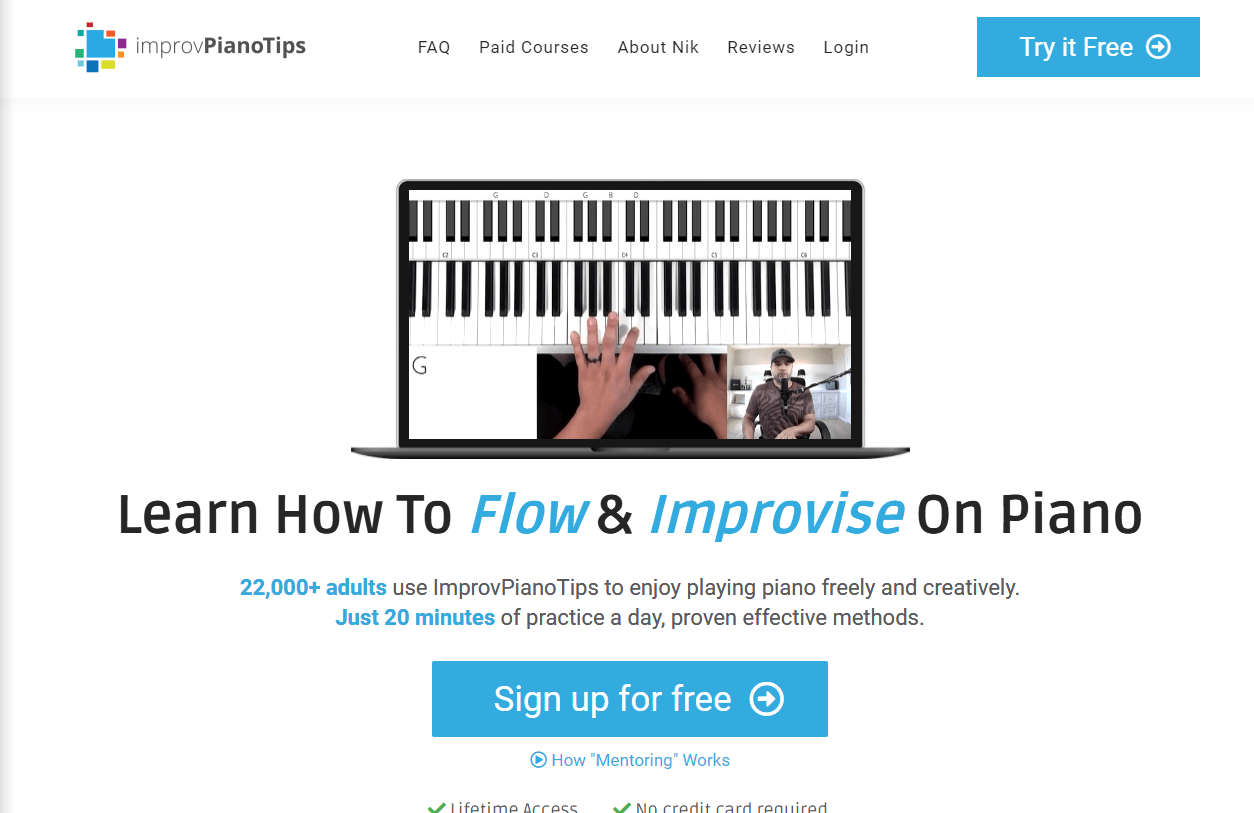
Improv Piano Tips, run by Nik, and is one of the most successful music schools created with LearnWorlds. Nik offers piano lessons to adults, and is teaching them how to express themselves through improvisations, solos, and creative playing.
What’s spot-on about this music school is that addresses and identifies the pain points of Nik’s target audience. On his school’s website he responds to these pain points through the use of student case studies and testimonials.
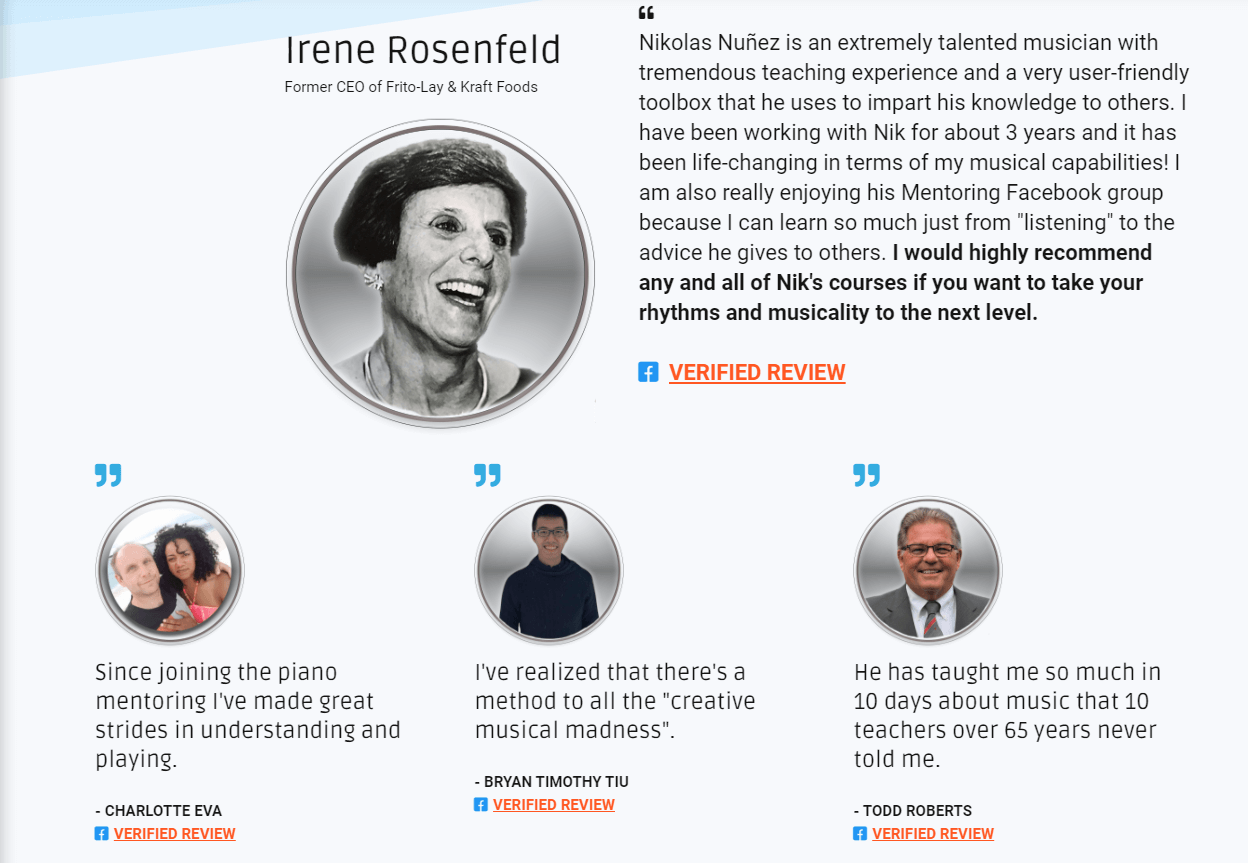
Nik also goes the extra mile inviting his students to attend his piano lessons explaining all the benefits they can get:
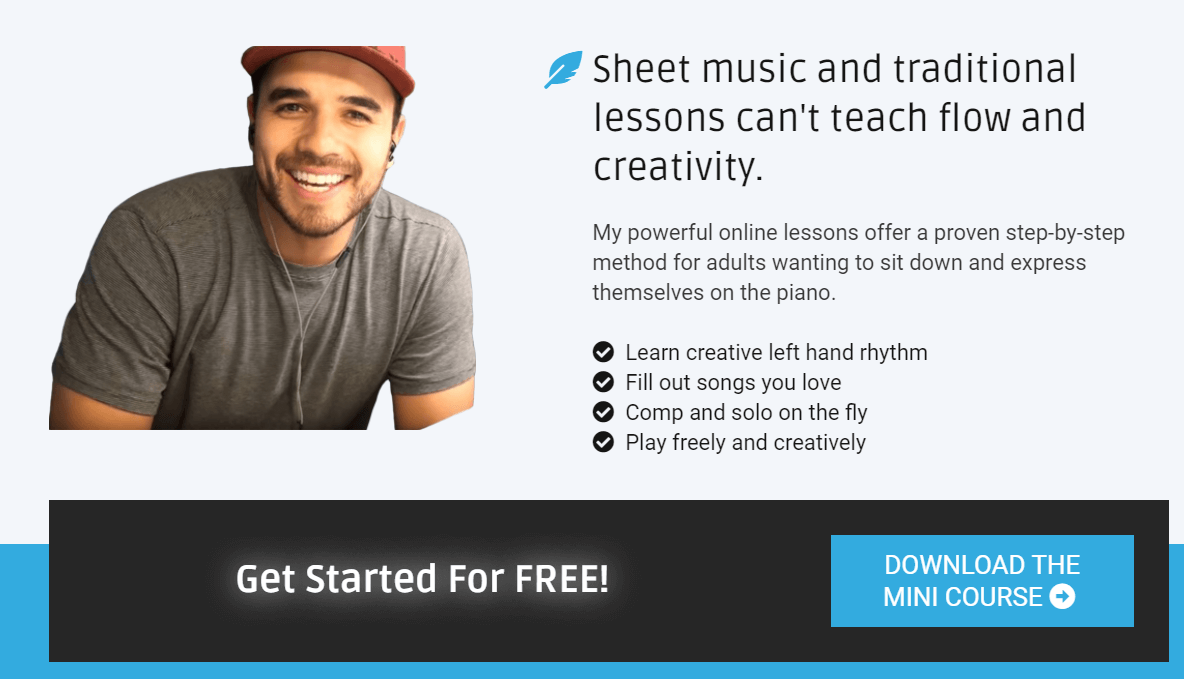
Example 2: MusicMatchr

Another music school that is worth looking more into is MusicMatchr. Founded by Taylor Dean, MusicMatchr offers online lessons on a variety of musical instruments and promises that students will learn how to play music fast and better.
Taylor’s online courses can help you train your brain into playing an instrument effectively while having fun along the way.
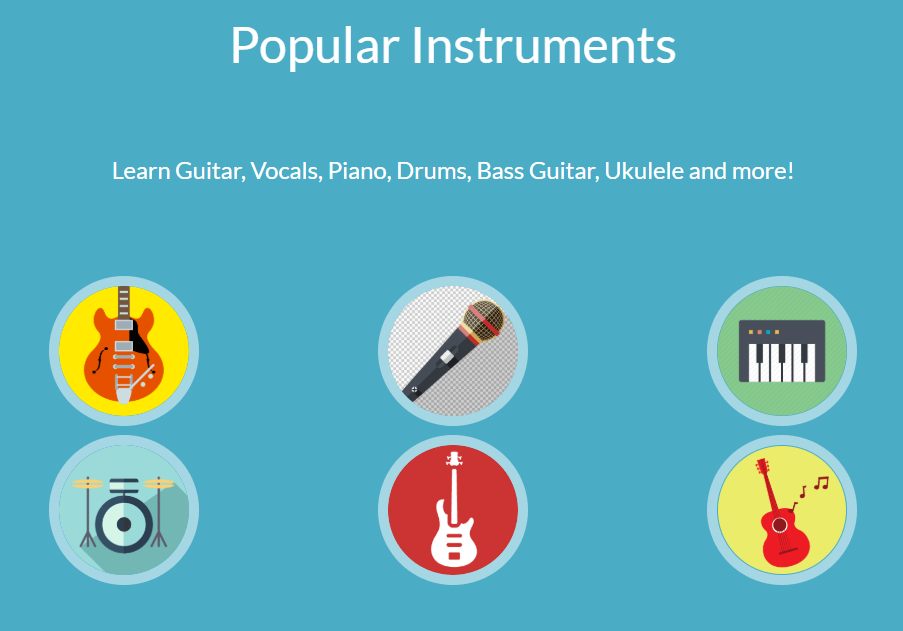
Prospective music students of all levels can join the MusicMatchr community, and can rest assured they are in good hands. The school offers structured course paths to learning how to play music and expert guidance along the way.

Example 3: Punkademic

Punkademic is the ultimate choice for those who want to learn how to produce electronic music. Equipped with the best tools, top trainers and university professors, this online music academy, offers music production and theory classes to beginners and advanced students.
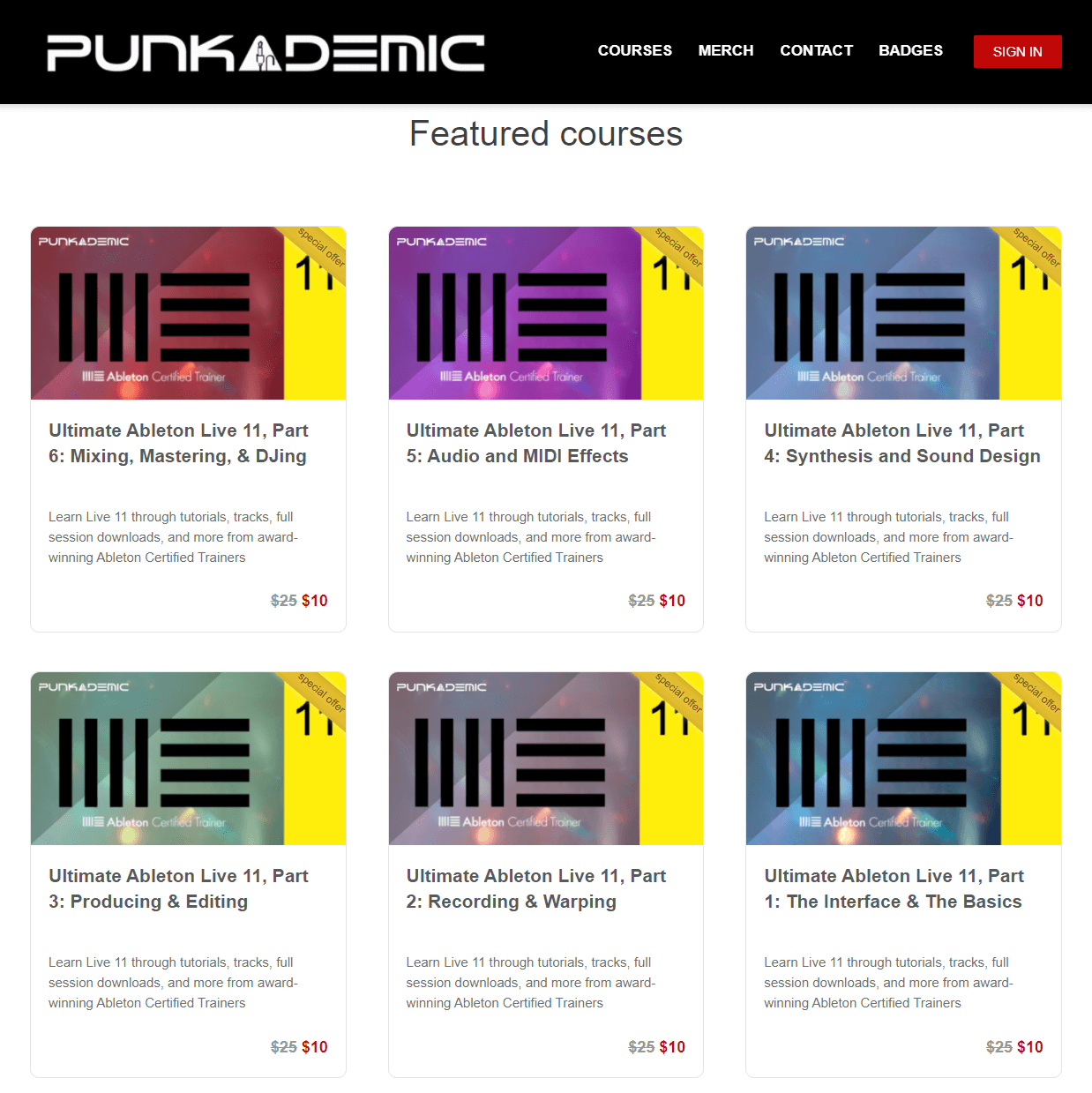
Online courses are sold individually or as a bundle – a package which includes a set of music lessons and comes at a discounted price. On top of that, it gives the opportunity to students to become subscribers and get exclusive access to all courses at a very affordable price.
Teach Music Online With LearnWorlds
If you are looking for an online learning platform to host your online music classes or courses, LearnWorlds is the ideal choice for you.
With LearnWorlds, you have the opportunity to not only offer individual lessons but create an online academy that teaches music. Our platform comes with the most essential and comprehensive tools you need to get started and grow your music studio easily.
Come up with unique music learning content
LearnWorlds supports a range of learning units and activities. Videos, PDFs, ebooks, SCORM, HTML5 and other types of multimedia can be incorporated right into your music courses.
If you plan to work with children you are going to need H5P content that supports the use of flashcards, and other gamification activities that can make learning fun and interactive.
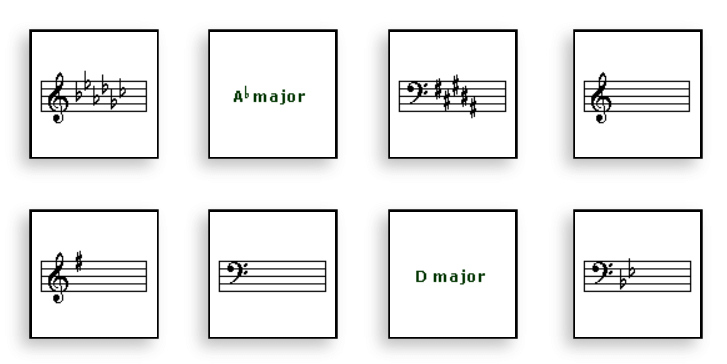
When it comes to using video, you have two options. You either upload your recorded videos (See supported video formats) on the platform directly or by using an embed code.
Conduct live music classes with the Zoom integration
Schedule and conduct live music classes using the LearnWorlds platform directly. Using the Zoom integration allows you to easily manage your upcoming live sessions giving you a full calendar view with all your scheduled music classes and meetings for the month.
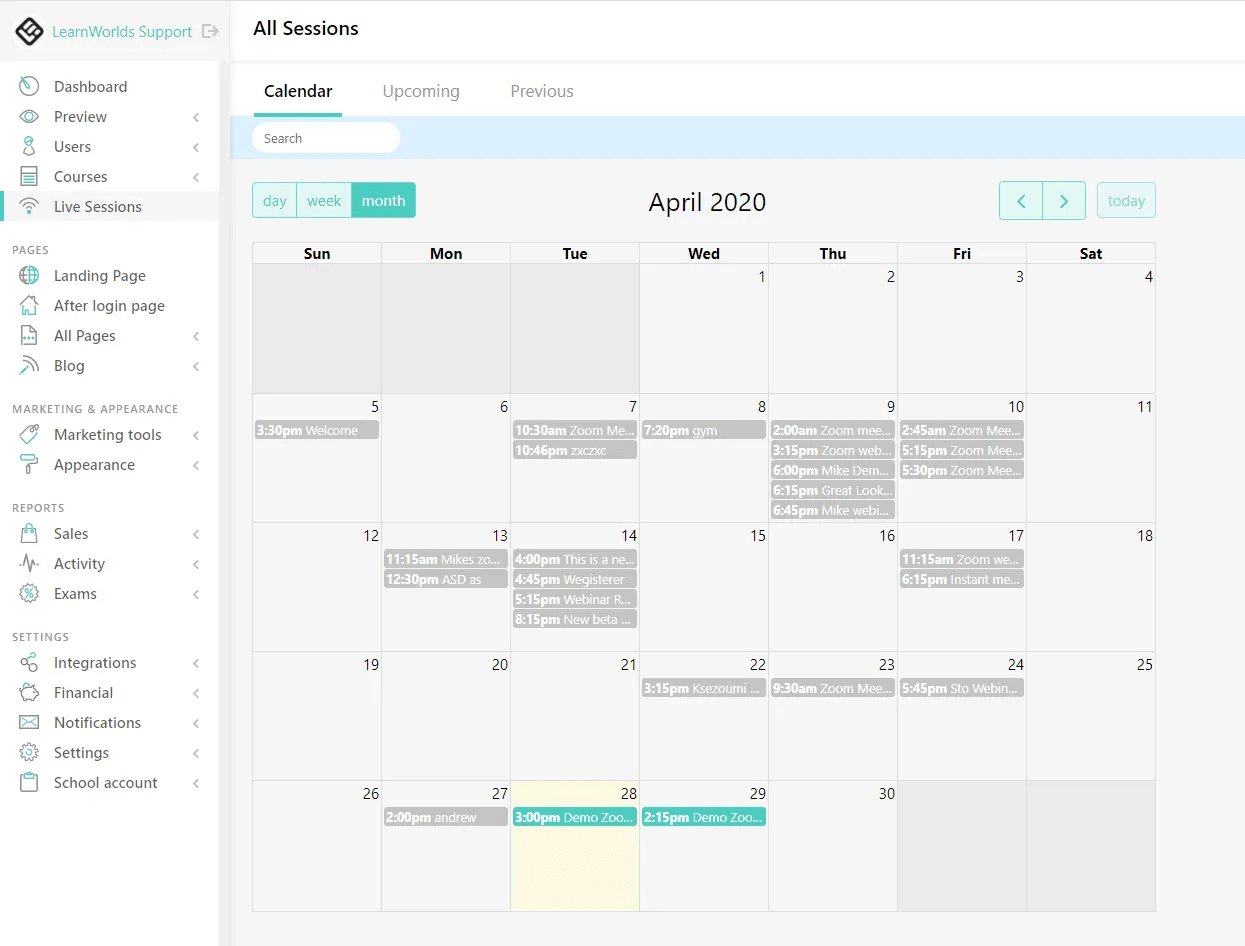
All you need to do is create an account on Zoom and then follow these guidelines to connect it to your online school.
*Signing up on Zoom is free when conducting 40-minute sessions.
Create a trusting and welcoming community
LearnWorlds allows you to build an online community that makes communication between the teacher and student and other students easy. As part of a community, students can create their own profiles and contact their peers directly or as a group, allowing the exchange of knowledge.

For music teachers interested in teaching choral music, conducting small ensembles, bands or even orchestras, the ability to create a group and facilitate discussion becomes essential for organizing and running online rehearsals effectively.
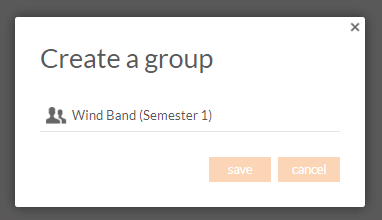
Come up with unique music lessons using our Interactive Video
LearnWorlds is the only platform that offers a fully interactive learning experience. The interactive video allows you to offer awesome video-based learning experiences, through the use of interactive elements such as questions, transcripts and subtitles.
Since videos is the main channel of communication when it comes to teaching music, you are going to find this tool super handy. This way, you make it super easy for students to follow instructions and stay engaged.
Manage your students progress using a gradebook
The LearnWorlds gradebook offers a comprehensive view of each student’s progress. With it you can see who is doing well and who is falling behind, so that you can offer the right feedback and help them get back on track.
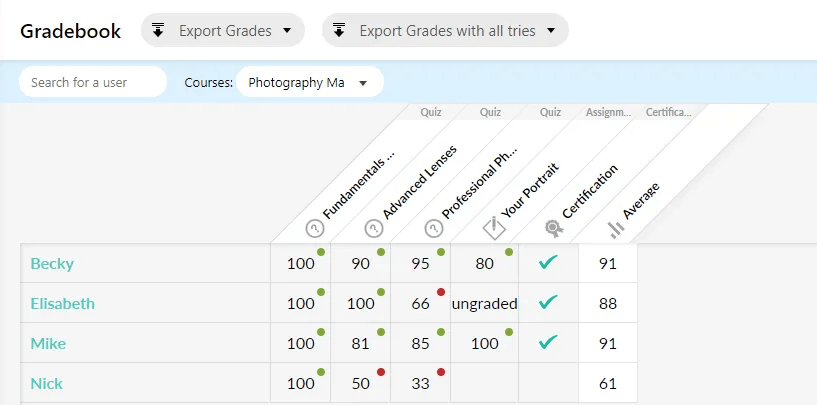
The gradebook allows you to record and edit grades, reset exams, and view students’ answers on tests and assignments. It can also tell you who has completed the course and got awarded a certification.
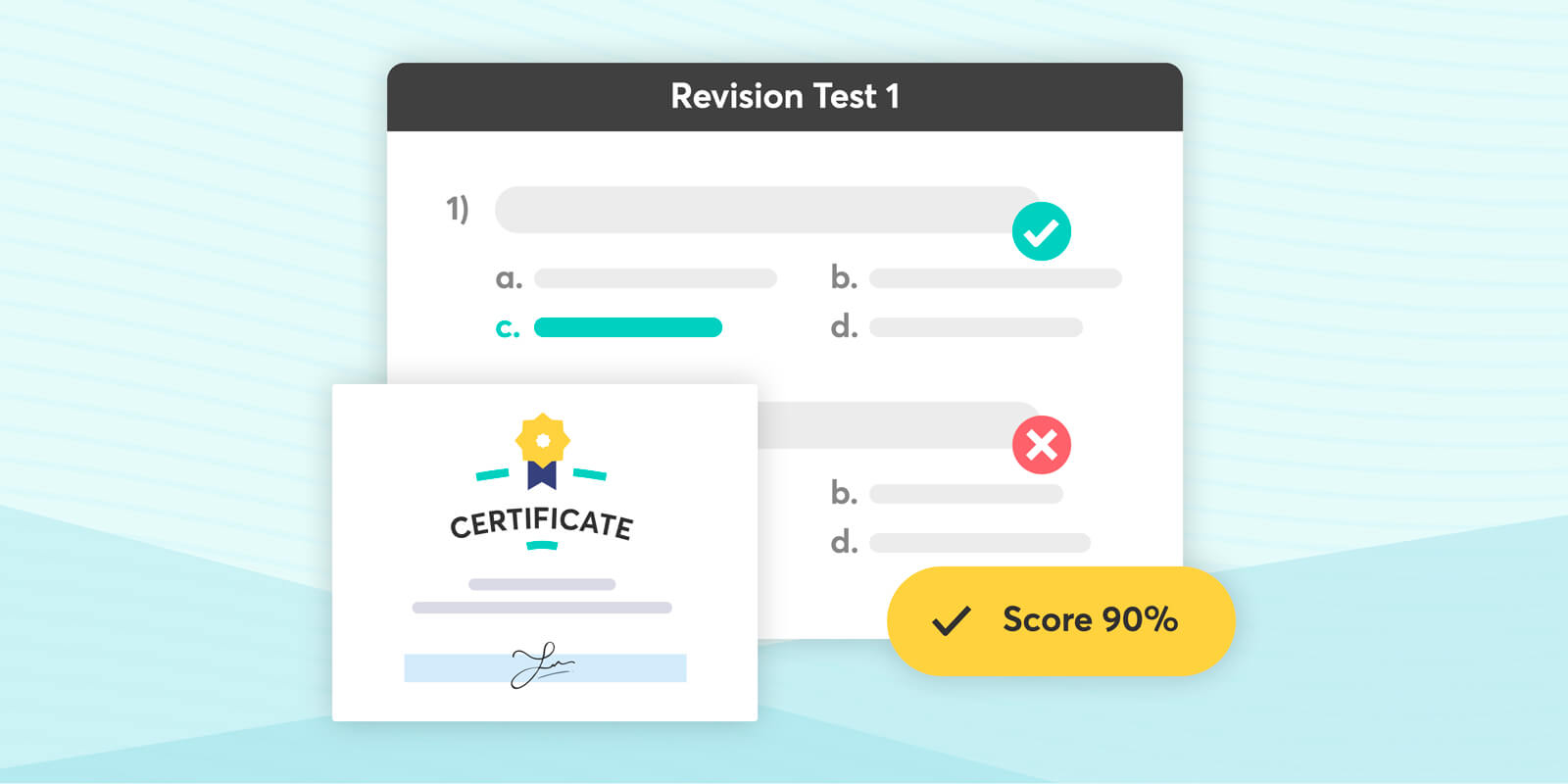
Start Monetizing Your Skills
Just like the fitness industry, the music industry has been hit severely by the Covid-19 outbreak. Despite all the hardship though, there is a shining hope for all creative professionals and musicians out there.
When it comes to teaching music online, opportunities are endless. As an alternative and viable solution to making ends meet, it offers the possibility to earn more money while working less.
Are you ready to teach music online?
Get your free 30-day trial with LearnWorlds and start offering your online lessons today!
Frequently Asked Questions (FAQs)
Q.1: How to teach virtual music lessons?
To start teaching virtual music lessons, you need to prepare your lesson plan, then choose a video conferencing tool like Zoom, Skype or Facetime (for iOS devices), and lastly schedule and contact the session using an online learning platform like LearnWorlds.
Q.2: How to teach music theory online?
You can teach music theory as part of an online course or individual online classes. The best way to do this is through an online course since it gives you the option to incorporate interactive learning activities, quizzes and assignments that can test your students’ knowledge.
Q.3: How to teach elementary music online?
Teaching elementary music online requires you coming up with the educational content and fun activities that are suitable for children. There are many websites with helpful resources like Chrome Music Lab or Classics for Kids that can help you out.
Q.4: How to teach general music online?
Prepare lesson materials that correspond to the K-5 Elementary school curriculum and help students understand general concepts about music.
Q.5: How to teach group music lessons online?
Start by delivering individual music lessons and then as you gradually get more students, create a group of students with the purpose to teach a specific music niche or conduct an ensemble (choral or instrumental). Use Skype, Zoom or Facetime, to deliver your online classes.
Q.6: How to teach instrumental music lessons online?
You will need to have aptitude in a specific musical instrument to be able to teach instrumental music lessons. You will also need to have the appropriate equipment such as the instrument, wifi connection, a laptop, a high-quality camera, microphone and headphones, as well as a video conferencing tool like Skype, Zoom or Facetime.
Q.7: What is the best platform for online music lessons?
There are many websites which offer online music teaching positions. However, if you are looking for a platform to offer online music lessons, LearnWorlds is the ideal choice for you as it comes with all the essential tools you need to offer interactive learning experiences.
Q.8: Is Skype or Zoom better for online music lessons?
Both Skype and Zoom are great options for online teaching. Zoom however, offers more options in terms of teaching music and was designed to suit the needs of educators.
Kyriaki is a Content Creator for the LearnWorlds team writing about marketing and e-learning, helping course creators on their journey to create, market, and sell their online courses. Equipped with a degree in Career Guidance, she has a strong background in education management and career success. In her free time, she gets crafty and musical.

